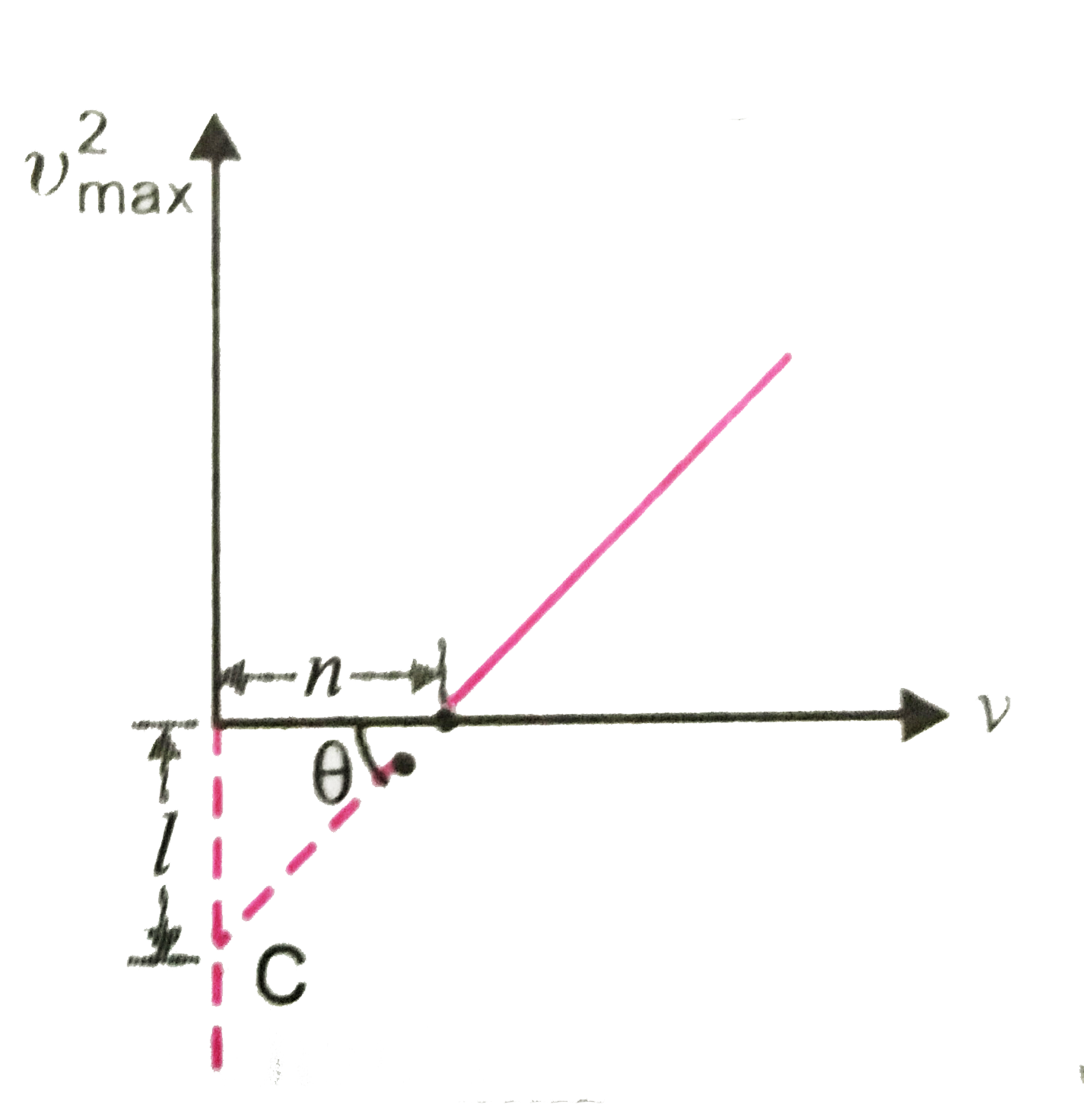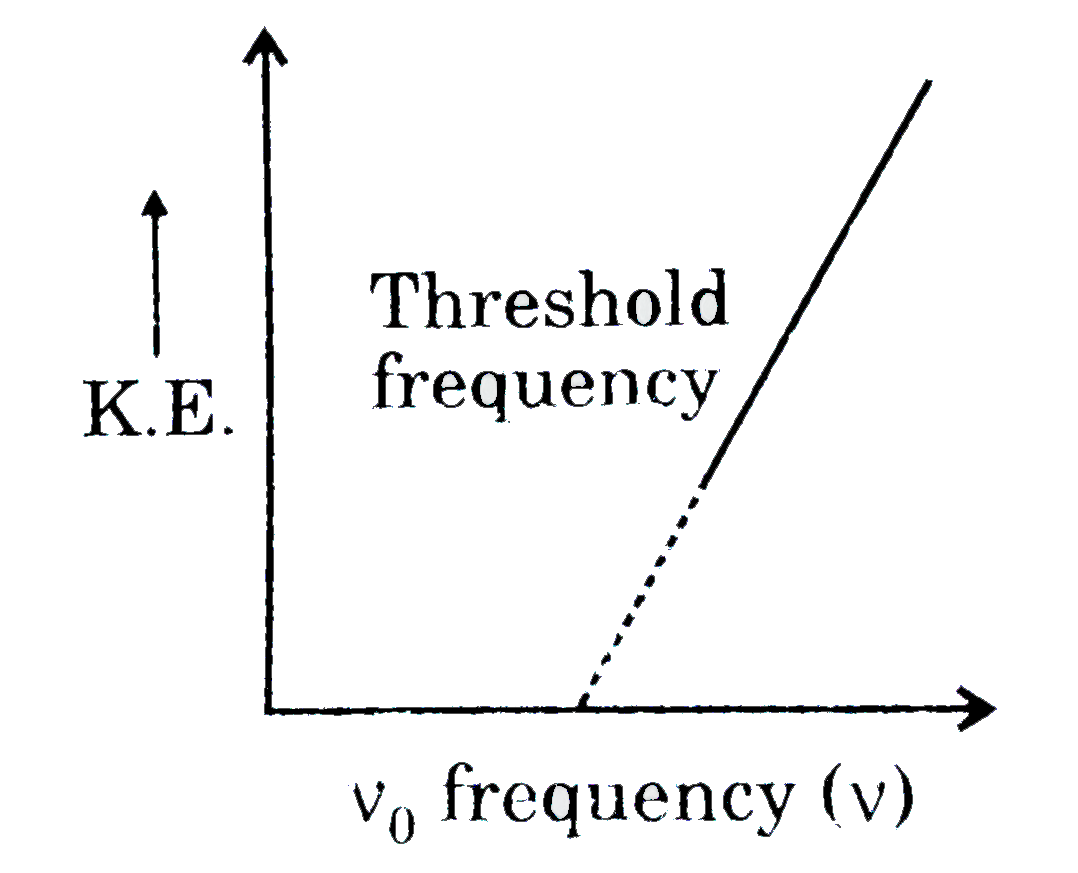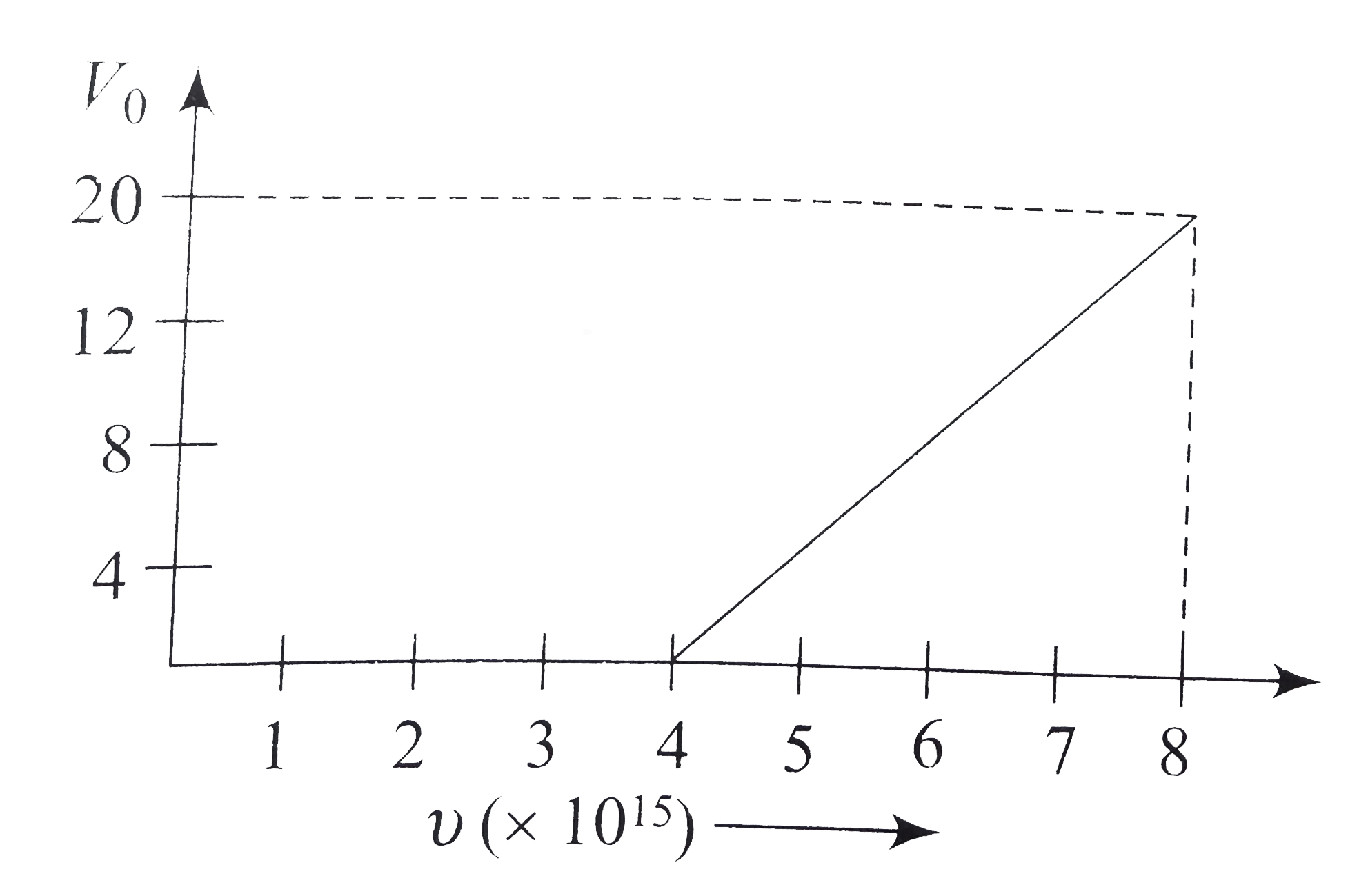When a given photosensitive material is irradiated with light of frequency ν, and maximum speed of the emitted photo-electrons equals vmax. The square of vmaxis observed to vary with v, as per the graph shown in fig. Obtain expression for
(i) Planck's constant and
(ii) the work function of the given photosensitive material, in terms of the parameter l, n and the mass m of the electrons.

Step by step video & image solution for When a given photosensitive material is irradiated with light of frequency nu, and maximum speed of the emitted photo-electrons equals v_(max). The square of v_(max)is observed to vary with v, as per the graph shown in fig. Obtain expression for (i) Planck's constant and (ii) the work function of the given photosensitive material, in terms of the parameter l, n and the mass m of the electrons. by Physics experts to help you in doubts & scoring excellent marks in Class 12 exams.
Updated on:21/07/2023Similar Questions
Given in fig. is the graph between frequency v of the incident light and maximum kinetic energy (Ek) of the emitted photoelectrons. Find the values of (i) threshold frequency and (ii) work function form the graph.

View SolutionIn an experiment of photoelectric effect, the graph of maximum kinetic energy EK of the emitted photoelectrons versus the frequency v of the incident light is a straight line AB as shown in Figure below:
Find : (i) Threshold frequency of the metal.
(ii) work function of the metal
(iii) Stopping potential for the photoelectrons emitted by the light of frequency v=30×1014 Hz.
View SolutionWhen a high frequency electromagnetic radiation is incident on a metallic surface, electrons are emitted from the surface. Energy of emitted photoelectrons depends only on the frequency of incident electromagnetic radiation and the number of emitted electrons depends only on the intensity of incident light.
Einstein's protoelectron equation [Kmax=hv−ϕ} correctly explains the PE, where υ= frequency of incident light and ϕ= work function.
Q. The slope of the graph between stopping potential and frequency is [here h is the Planck's constant and e is the charge of an electron] is
View SolutionIn the photoelectric effect the eletrons are emiited intantaneously from a given matal plate when it is irradiated with radiation of frequency equal to or greater then some minimum ferquency, is called the threshold frequency.According to Planck's idea, light may be considered to be made up discrete particles called photons.Each photon carries energy equal ti hv.When this photon cllides with the electron of the metal, the electron acquires energy of the emitted electron is given by :
hv=K.Emaximum+PE=12mu2+PE
If the incident rediation is of threshold frequency the electron will be emitted without any kinetic energy
i.e hv0
∴12mu2=hv−hv0
A plot of kinetic energy of the emitted electron versus frequency of the incident radiation yields a straight line given as :

The number of photoelectrons emitted depends upon :
View SolutionIn the photoelectric effect the electrons are emiited instantaneously from a given metal plate when it is irradiated with radiation of frequency equal to or greater than some minimum ferquency, is called the threshold frequency.According to Planck's idea, light may be considered to be made up discrete particles called photons.Each photon carries energy equal to hv.When this photon collides with the electron of the metal, the electron acquires energy of the emitted electron is given by :
hv=K.Emaximum+PE=12mu2+PE
If the incident rediation is of threshold frequency the electron will be emitted without any kinetic energy
i.e hv0
∴12mu2=hv−hv0
A plot of kinetic energy of the emitted electron versus frequency of the incident radiation yields a straight line given as :

A laser producting monochromatic lights of different wavelenght is uesd to eject electrons from the sheet of gold having threshold frequency 6.15×1014s−1 Which of the following incident rediation will be suitable for the ejecting of electrons ?
View SolutionTwo metallic plate A and B , each of area 5×10−4m2, are placed parallel to each at a separation of 1cm plate B carries a positive charge of 33.7×10−12C A monocharonatic beam of light , with photoes of energy 5eV each , starts falling on plate A at t=0 so that 1016 photons fall on it per square meter per second. Assume that one photoelectron is emitted for every 106 incident photons fall on it per square meter per second. Also assume that all the emitted photoelectrons are collected by plate B and the work function of plate A remain constant at the value 2eV Determine
(a) the number of photoelectrons emitted up to i=10s,
(b) the magnitude of the electron field between the plate A and B at i=10s,and
(c ) the kinetic energy of the most energotic photoelectrons emitted at i=10s whenit reaches plate B
Negilect the time taken by the photoelectrons to reach plate B Take ε0=8.85×10−12C2N−m2
View SolutionMonochromatic radiation emitted when electron on hydrogen atom jumps from first excited to the ground state irradiates a photosensitive material. The stopping potential is measured to be 3.57V. The threshold frequency of the material is
View SolutionMonochromatic radiation emitted when electron on hydrogen atom jumps from first excited to the ground state irradiates a photosensitive material. The stopping potential is measured to be 3.57V. The threshold frequency of the material is
View Solution(i) In the explanations of photoelectric effect, we assume one photon of frequency ν collides with an electron and transfer its energy. This leads to the equation for the maximum energy Emax of the emitted electron as Emax=hν−ϕ0 Where ϕ0 is the work function of the metal. if an electron absorbs 2 photons (each of frequency v) what will be the maximum energy for the emitted electron?
(ii) Why is this fact (two photon absorption) not taken into consideration in our discussion of the stopping potential?
View Solution
When a high frequency electromagnetic radiation is incident on a metallic surface, electrons are emitted from the surface. Energy of emitted photoelectrons depends only on the frequency of incident electromagnetic radiation and the number of emitted electrons depends only on the intensity of incident light.
Einstein's protoelectron equation [Kmax=hv−ϕ] correctly ecplains the PE, where υ= frequency of incident light and ϕ= work function.
Q. For photoelectric effect in a metal, the graph of the stopping potential V0 (in volt) versus frequency υ (in hertz) of the incident radiation is shown in Fig. The work function of the metal (in eV) is.
View Solution
